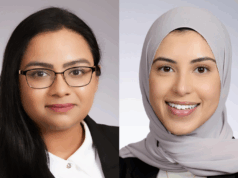Isolation of the pulmonary vein antrum and the superior vena cava using intracardiac echocardiography and circular mapping can achieve encouraging cure rates in both patients with paroxysmal atrial fibrillation (AF) and those with non-paroxysmal atrial fibrillation, even when the procedure is performed at different centres by different operators.
These are the conclusions of the study “Impact of type of atrial fibrillation and repeat catheter ablation on long-term freedom from atrial fibrillation: Results from a multicenter study”, published in the October 2009 issue of the HeartRhythm journal. “Although the success rate is higher in patients with paroxysmal atrial fibrillation, repeat catheter ablation is a useful strategy to enhance freedom from AF and should be taken into consideration when planning ablation in patients with AF,” the authors wrote in the conclusion.
This prospective multicentre study analysed the efficacy of catheter ablation performed by different operators in patients with non-paroxysmal atrial fibrillation and compared it to the results in patients with paroxysmal AF. The first authors are Mandeep Bhargava and Luigi Di Biase, Cleveland Clinic, Cleveland, USA.
The study included 1,404 consecutive patients who underwent catheter ablation for AF at four centres. Twelve operators performed the procedures using a single technique guided by intracardiac echocardiography. All patients had symptomatic, drug-resistant atrial fibrillation. Patients were excluded from the study if they were <18 years old or >85 years old or if they had a contraindication to oral anticoagulation.
Patients were enrolled as follows: 953 patients from Cleveland Clinic, 102 patients from Sutter Pacific Heart Center (San Francisco, USA), 89 patients from Southlake Regional Health Center (Newmarket, Canada), and 260 patients from Umberto I Hospital (Mestre-Venice, Italy).
Patients were classified as having paroxysmal, persistent, or long-standing persistent AF per ACC/AHA/ESC guidelines and the HRS/EHRA/ECAS Consensus Statement. Patients were divided into three groups: PAF (n=728), persistent AF (n=293), and long-standing persistent AF (n=383). Of the 1,404 patients, 676 (48.1%) had non-paroxysmal atrial fibrillation.
Antiarrhythmic drugs were discontinued for at least five half-lives prior to the procedure, and amiodarone was stopped at least five months prior to the procedure. The patients continued to receive anticoagulation until two days prior to the procedure. The first 350 patients underwent transesophageal echocardiography prior to the procedure. Subsequently the need for transesophageal echocardiography was limited to patients presenting in AF/atrial flutter, those with left ventricular dysfunction, or patients with a prior history of a thromboembolic event.
A 20mm, decapolar circular mapping catheter with a deflectable loop was used for mapping (Lasso, Biosense Webster), and an 8mm tip catheter (Celsius, Biosense Webster) or a 4mm internal cooled tip catheter (EP Technologies) was used for ablation. Radiofrequency ablation was performed targeting contiguous sites that showed the earliest activation of pulmonary vein potentials. Radiofrequency energy was applied at these sites to achieve complete abolition of all pulmonary vein potentials along the antrum and entrance block into the pulmonary veins.
Patients underwent 48-hour Holter monitoring after discharge and at three, six, nine, and 12 months after the procedure.
At mean follow-up of 57±17 months, 565 of 728 patients with paroxysmal atrial fibrillation and 454 of 676 patients with non-paroxysmal atrial fibrillation (77.6% vs. 67.2%, p<.001) had freedom from AF after a single ablation procedure. For arrhythmia recurrences, 74.2% (121/163) patients with paroxysmal AF and 74.8% (166/222) with non-paroxysmal AF underwent repeat ablation, after which 92.4% patients with paroxysmal AF and 84% patients with non-paroxysmla AF remained free from atrial fibrillation.
The authors concluded that, “At least moderate efficacy can be achieved in patients with non-paroxysmal AF, although the success rate is lower than in patients with paroxysmal AF. Considerably higher success can be achieved in both groups with repeat ablation.”












